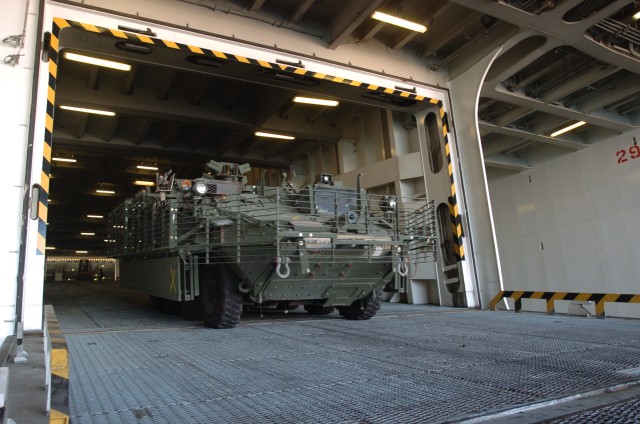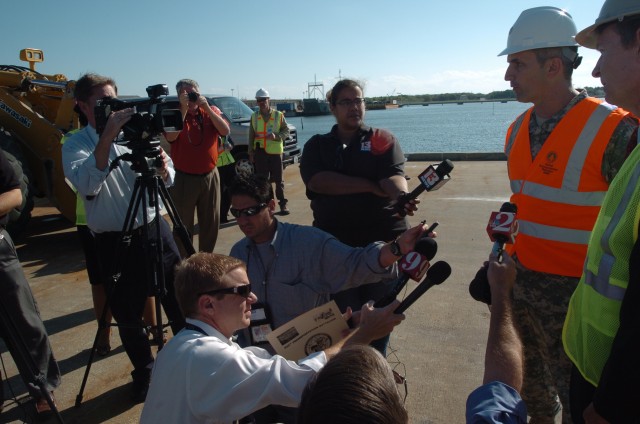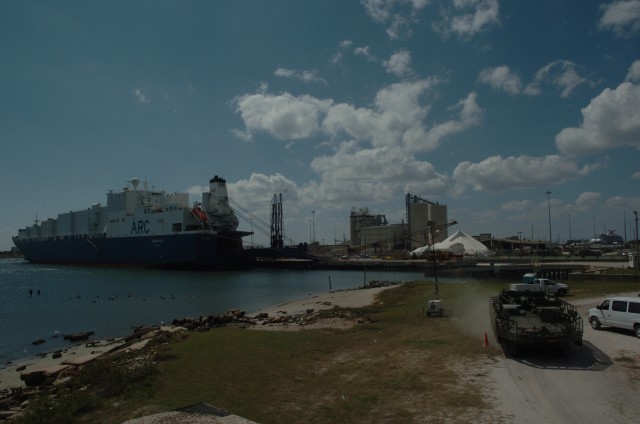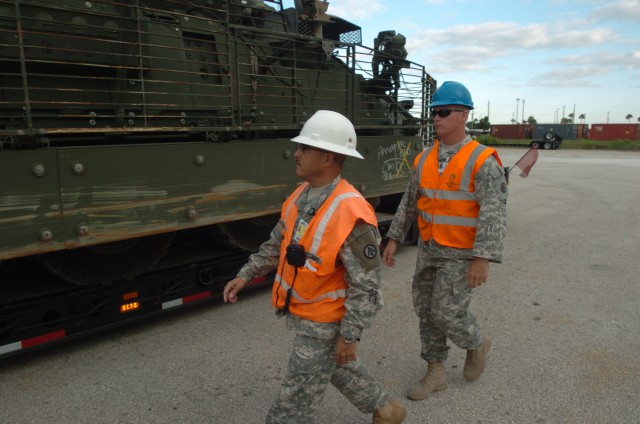Among the cruise ships and NASA shuttle preparations Wednesday at Port Canaveral, Fla., was the unusual sight of hundreds of Strykers combat vehicles rolling into the port. Military Surface Deployment and Distribution Command (SDDC) was bringing the last combat brigade from Iraq back onto American soil.
The 832nd Transportation Battalion's Cape Canaveral Detachment managed the redeployment of the 4th Stryker Brigade Combat Team, 2nd Infantry Division, Oct. 6-7 at Port Canaveral, Fla.
More than 300 Strykers were unloaded from the roll-on/roll-off ship ARC Endurance on the first day of port operations. All but a few were driven off by stevedores from Ambassador Services, trained to drive the vehicles at Fort Lewis, Wash. in advance of the mission.
That training was key in the offload being completed in half the scheduled time, according to Cape Canaveral Detachment traffic manager Dan Robinson.
"The Strykers aren't a typical operation for the Cape Detachment. We had a lot of training and planning," Robinson said. "We also had our master trainer from Jacksonville in place to manage and supervise of all the drivers. The vessel came in from theater with most of the vehicles operational. This went so well because whole thing was synchronized between the Cape Detachment, the battalion, the stevedores, and the Port Support Activity team."
The detachment, which maintains a permanent presence of five people at the port, conducts sustainment cargo shipments to the islands of Ascension and Antigua, as well as the Atlantic Underwater Test and Evaluation Center. A tenant unit on Cape Canaveral Air Force Station, the detachment also supports the Air Force 45th Space Wing and NASA.
Port Canaveral was selected for the delivery due to its proximity to the cargo's destination, Anniston Army Depot, Ala., where the vehicles will go through Army Materiel Command's reset process.
For many of the Soldiers and civilians supporting the redeployment, the Strykers held a significance beyond than the scale of the operation. Many have supported the deployment, sustainment and redeployment of the U.S. military from ports and distribution nodes around the world since the war began in 2003.
Sgt. 1st Class Joseph Barajas, cargo specialist, deployed to Kuwait in 2006-7 supporting the surge of troops and equipment that helped turn a corner in Operation Iraqi Freedom. To Barajas, the Strykers are a reminder of something far more important.
"My son was in the Army for five years. He was with the Strykers in Iraq, in the infantry," Barajas said. "I'm relieved we're bringing our equipment home, but we're trying to bring our Soldiers home."
As Operation New Dawn moves into its second month, the hope for a free Iraq remains strong among the SDDC troops, civilians and contractors who have invested so much over the last seven years from locations around the world.
"This is a big day for us, and a big day for the U.S. Army," said Lt. Col. Bleu Hilburn, commander of the 832nd Trans. Bn. "This marks the end of Operation Iraqi Freedom and the beginning of Operation New Dawn. It's a significant watershed for the military. It's not just a new name. It's a new mindset. We're now involved in supporting a sovereign Iraqi government."








Social Sharing